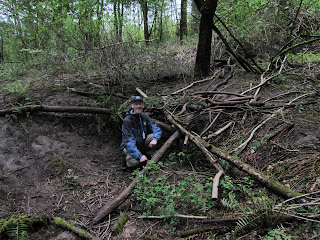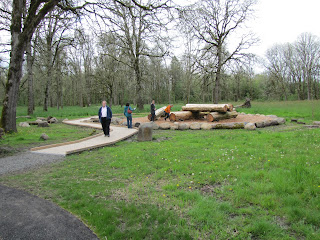I have been looking for a Montessori program for my little one and at the same time doing some landscape improvements at our house that will facilitate play. While she is a bit young for a slide or climbing equipment there are lots of things that are montessori based that she can do now. To me Montessori spaces are inviting in nature: they are inspiring, organized, and calm.
MARIA MONTESSORI
One of the central tenants of the Montessori philosophy
is the connection with the natural world. Children
should have the daily opportunity to
experience the outdoors with structure and purpose. She placed a great emphasis
on nature and nature education. Dr. Montessori also felt that the outdoor environment should be an extension of the classroom.
“It is also necessary for his
psychical development to place the soul of the child in contact with creation,
in order that he may lay up for himself treasure from the directly educating
forces of living nature.” Maria Montessori
FACILITATING MONTESSORI WORK
Many of the ideas are not space based they are 'work' based. Much of Montessori education is based on prepared tasks or work that children can practice and achieve. How can Montessori work be adapted to outdoor spaces and materials? As a designer this leads to what types of spaces are needed? What materials are offered, where are they stored, and how?
Here is a basic Montessori math activity. We need exactly 55 pine cones (children check their work by using all the pieces) usually stored in a nice basket, chalk (also in the basket), a large, flat, and safe space where they can write and organize without being interrupted.
ORGANIZATION AND MATERIALS
Materials and spaces need to be organised so appropriate work can happen and so children are drawn to the work.
APPROPRIATE OUTDOOR WORK
Much of the Montessori work for little ones happens around practical life skills. If only we can get kids to weed! At least digging, wheelbarrows, sweeping and planting seem to be within reach.
 |
| I could not find this web sourfce again after catching these littel ones at work. Please let me know if you know the source. |
How do we inspire a deep and true connection to nature? I like this Montessori farm approach (dispite being bit by a chicken as a child)!
HOW TO MAINTAIN THE OUTDOOR MONTESSORI AREA
The process from inspiration to design can be a long and detailed endevour. But, there are some wonderful resources out there. The Montessori Print Shop has learning materials as well as a specific section on playgrounds. They have a lot of helpful playground forms including an injury log, inspection forms for daily, monthly and yearly and seasonal maintenance. While the forms may seem like extra work they will be invaluable for maintenance, extending the life of your playscape, protecting children and liability.










































